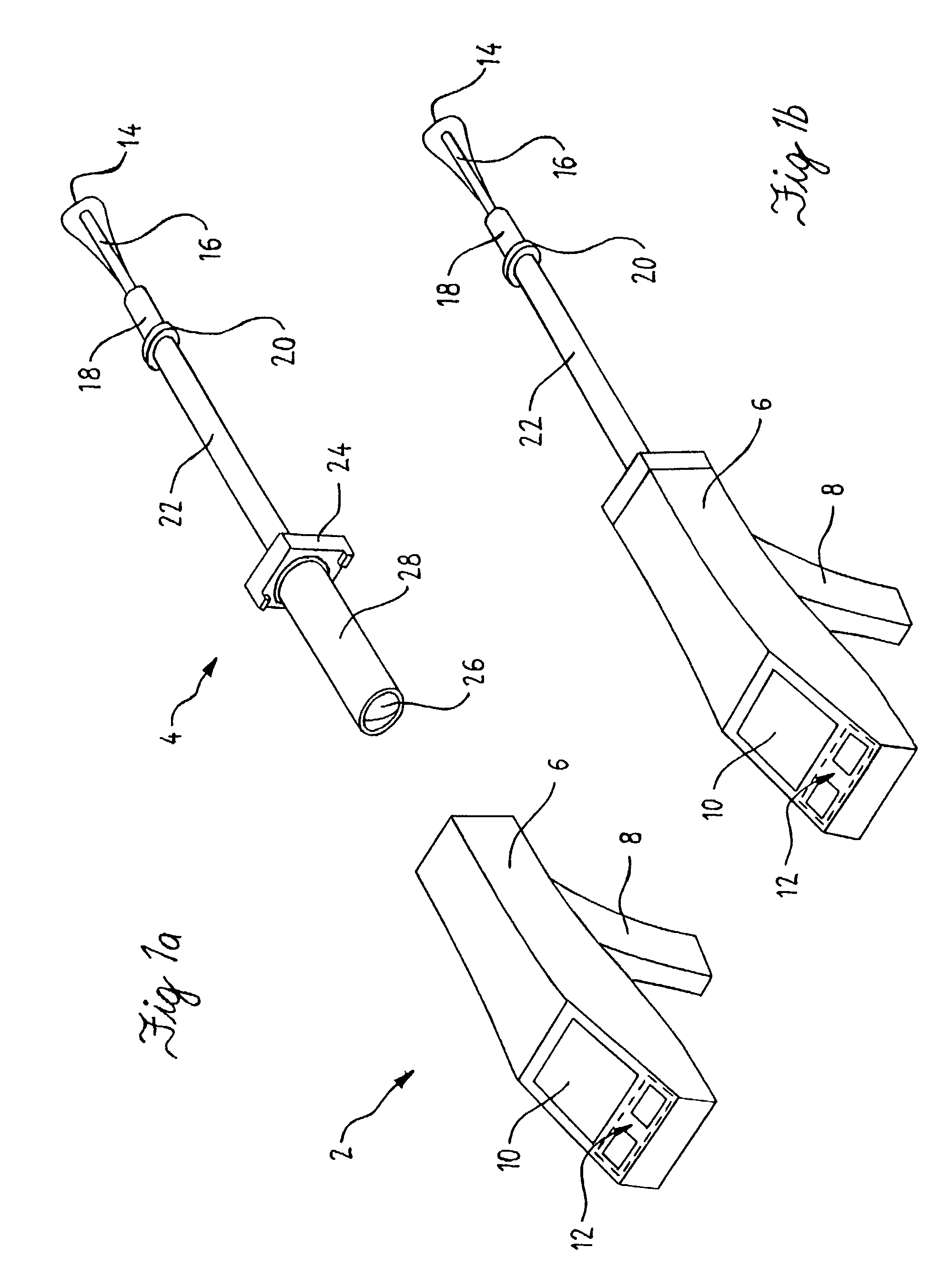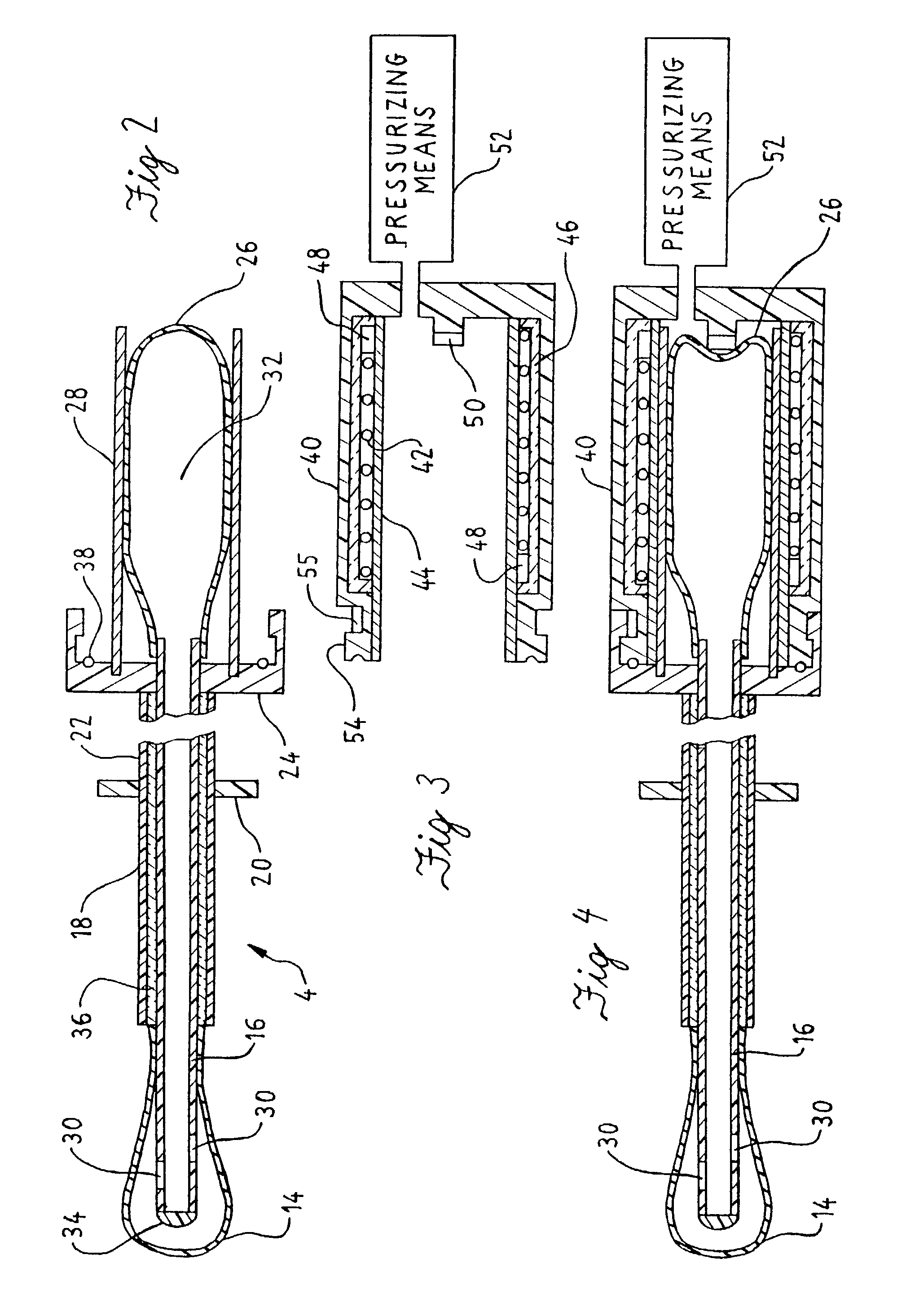Such alternative ablation techniques also
pose higher risk of perforating the uterus, normally require use of general
anesthesia, and have a higher incidence of post-operative complications than thermal
balloon ablation techniques.
In
spite of the potential advantages of thermal balloon ablation techniques over
alternative treatment methodologies, problems with the thermal balloon ablation apparatuses in the prior art have prevented such devices from being adopted widely for use in the treatment of menorrhagia.
During heating, these devices often develop temperature gradients in the liquid which can result in uneven treatment of the endometrial surface.
Placement of the
heating element relative to the balloon walls is difficult to control in practice.
However, such circulating methodologies add cost and complexity to the apparatus and the ability to achieve desired temperature uniformity depends among other factors on the volume of liquid within the balloon.
This has limited the variety of liquids to those typically found in a clinical environment (e.g. D5% W or
saline).
Heating liquid to the
boiling point can result in a dangerous increase in balloon volume due to expansion of gas and in uneven treatment since the presence of this gas pockets in the balloon act to thermally insulate the adjacent tissue.
The
maximum temperature limitation of these liquids has resulted in relatively long treatment times; it is well established in the research and in clinical practice that it requires in approximately 8 minutes to cauterize the endometrium by thermal balloon ablation using liquid temperatures of 85 C. Furthermore, the use of liquid temperatures in the range of 70-90 C makes the use of liquid heating means external to the uterus or balloon ineffective since in this temperature range there is insufficient
heat energy contained within the volume of liquid within the uterus to adequately cauterize the endometrium.
In addition, devices with heating elements located in the balloon within the uterus prohibit the use high
viscosity liquids (such as 100% Glycerin) which
resist flow at ambient temperatures but once heated become less viscous and can readily flow through a
catheter to inflate a balloon placed in the uterus.
Systems which require the operator to supply the inflation liquid are also complicated for the operator to use.
This process also compromises the
sterility of the
system since there is potential for non-sterile or contaminated liquid to circulate within the balloon.
In the event of a balloon leak or rupture, this non-sterile liquid is released into the
uterine cavity and could result in infection.
Devices in the prior art typically rely on mechanical actuators, syringes, or liquid pumps which come into contact with the treatment liquid in order to control inflation and pressurization of the balloon, these can be expensive, unreliable, and subject to
contamination.
Furthermore such systems (such as that disclosed by Stevens et a—U.S. Pat. No. 5,800,493) typically have expensive disposable components as these components often include hoses, valves, connectors,
electrical wiring, syringes, and heating elements which must be disposed of after each use.
Often it is difficult for the operator to control inflation pressure and there is not adequate means to control this pressure in response to changes in uterine volume during treatment (typically the uterus relaxes and expands as treatment progresses and therefore it is desirable to increase the volume of liquid in the balloon to maintain a constant inflation pressure).
Wallsten et al U.S. Pat. No. 5,693,080 discloses apparatus intended to allow automated control of inflation pressure through mechanical actuation of syringes or similar means however this is costly and does not allow fine control of pressures.
Wallsten et al further disclose a means for providing
overpressure relief in the event of a increase in balloon pressure such as that which might be caused by a sudden contraction of the uterus during treatment however this does not provide a practical or inexpensive means for automated control of
balloon inflation, deflation, and
liquid pressure.
There is a danger of perforating the uterus by over-inserting the
catheter if the clinician does not perform this operation properly.
Because of the high
viscosity at ambient temperatures, such liquids could not be readily utilized in apparatus where the heating means is located inside the balloon which is inserted into the uterus.
 Login to View More
Login to View More  Login to View More
Login to View More 


